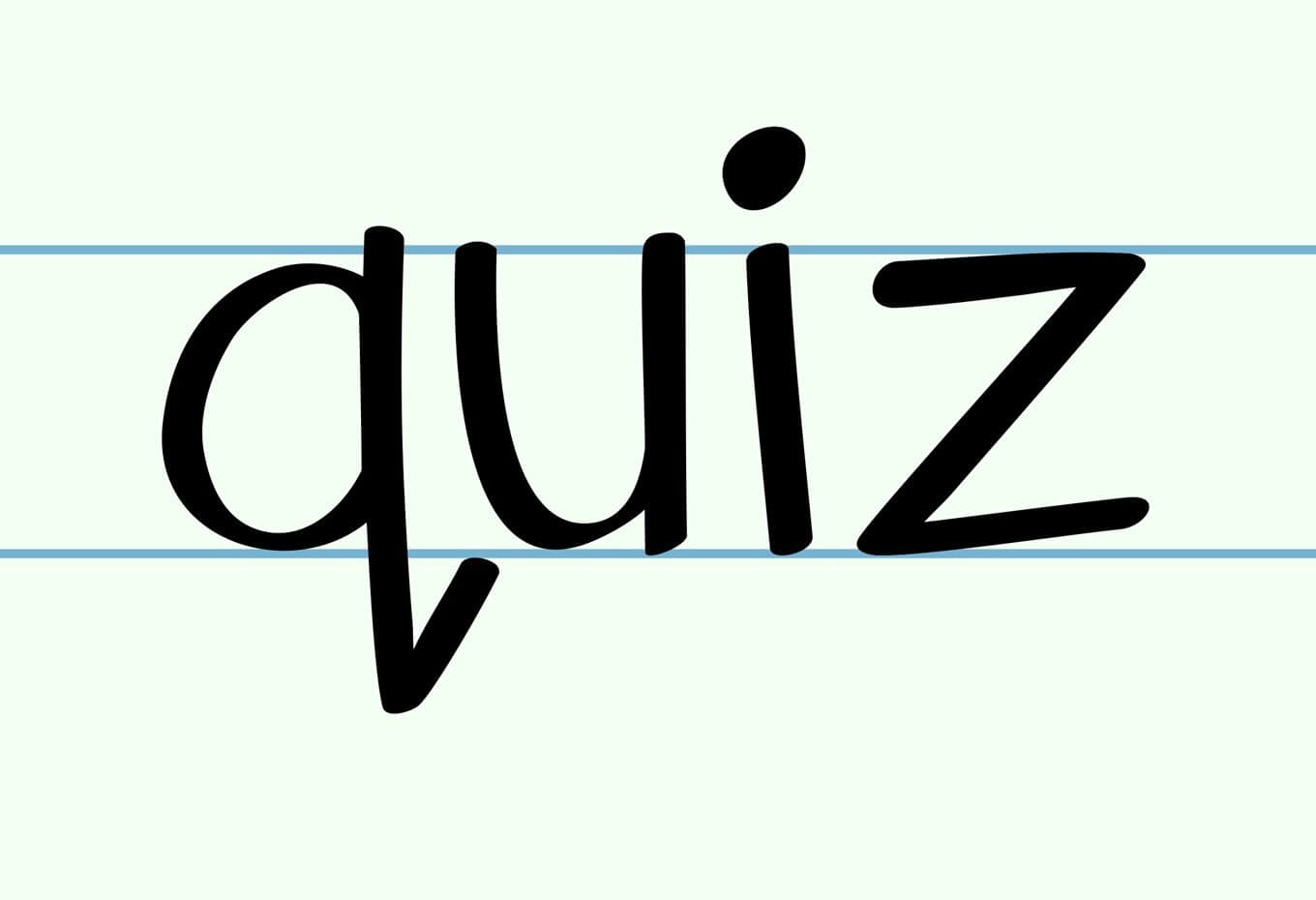Quality Management: Guidelines and Resources
Copyright Carter McNamara, MBA, PhD, Authenticity Consulting, LLC.
Before reading this topic, you might read about the Relationship Between Managing Supply Chain, Operations, Quality, Customer Relationships and Customer Service.
Sections in this Topic Include
Introduction to Quality Management
Approaches to Quality Management
Planning Your QMS
Developing Your QMS
Managing Your QMS
General Resources
Also consider
INTRODUCTION TO QUALITY MANAGEMENT
What is Quality Management?
We All Are Doing Quality Management
We tend to think of the activities in quality management as occurring primarily in businesses, and especially in manufacturing. However, all of us are engaged in quality management. Think of a certain time that you wanted to accomplish something, for example, to achieve a certain goal or to provide an ongoing service. You probably started by planning how to do it. Then you implemented your plan to try it out for a while. Then you continued to notice changes that were needed to improve it. Basically, you were doing quality management — you were continuing to improve the quality of achieving the goal or of the service.
Perhaps you have worked for a supervisor in an organization. The supervisor asserted certain goals that you were to achieve, as well as certain tasks that you were to do. As you worked to do that, you and your supervisor monitored how well you were doing your job. The supervisor might have shared feedback about how you were doing, as well as some suggestions to make things better. You might have had an annual performance appraisal meeting with the supervisor in which you got an official rating of how well you do were doing. Those activities are referred to as employee performance management. They are a form of quality control — although the term “control” might have negative connotation in that situation.
Quality Management in Organizations
Here are some definitions of quality management in an organizational setting:
- “Quality management is the act of overseeing all activities and tasks needed to maintain a desired level of excellence. This includes the determination of a quality policy, creating and implementing quality planning and assurance, and quality control and quality improvement.” Investopedia
- “Quality management” ensures superior quality products and services. Quality of a product can be measured in terms of performance, reliability and durability. Quality is a crucial parameter which differentiates an organization from its competitors. Quality management tools ensure changes in the systems and processes which eventually result in superior quality products and services.”
MSG Management Study Guide
- “Quality management is the act of overseeing different activities and tasks within an organization to ensure that products and services offered, as well as the means used to achieve them, are consistent. It helps to achieve and maintain a desired level of quality within the organization.” CFI Education, Inc.
The activities of quality management are somewhat different between developing and delivering products and services. A product is a tangible item, whereas a service is intangible. Thus, products are easier to monitor and measure so quality management of products is more straightforward to do. Services are more difficult to measure because the quality depends on subjective matters such as the quality of the relationship between the service provider and the customer.
Quality Is Best Managed as a System
A system is a recurring cycle of activities, including:
- Planning to determine goals and how they can be achieved, and
- Then developing and managing resources and activities to achieve those goals, and
- Then evaluating whether the goals have been achieved or not, and
- Then using the learning from the evaluation to improve the quality of the next round of planning.
Thus, a system is a recurring loop of components — in a continuous cycle of improvement. Quality management is best done as a system; otherwise, the management tends to be highly reactive and sporadic, often resulting in a patchwork of disconnected and ineffective activities.
Again, we turn to the American Society of Quality: “A quality management system (QMS) is defined as a formalized system that documents processes, procedures, and responsibilities for achieving quality policies and objectives. A QMS helps coordinate and direct an organization’s activities to meet customer and regulatory requirements and improve its effectiveness and efficiency on a continuous basis.”
More Terms in Quality Management
There are a several quality-related terms, most of which sound similar to each other, but that are somewhat different. These include:
Quality Assurance and Quality Control
The American Society for Quality distinguishes the difference. Quality assurance is “focused on providing confidence that quality requirements will be fulfilled.” Quality control is “more the inspection aspect of quality management” or “the operational techniques and activities used to fulfill requirements for quality.”
Quality Planning
myPmps writes that quality planning is for “identifying which quality standards are relevant to the project and determining how to satisfy them”. So essentially it is the process that specifies the measurable requirements and milestones and for when they are to be achieved.
Quality Improvement
U.S. Department of Health and Human ServicesQuantifying the Benefits of Quality: Employee Training and Incentives writes that “Quality improvement (QI) consists of systematic and continuous actions that lead to measurable improvement in health care services and the health status of targeted patient groups.”
Pioneers in Organizational Quality Management
W. Edwards Deming led the quality management in Japan after World War II. Today, Japan stands as an example of the accomplishments and prestige that come from producing high-quality products. He has been credited with starting the quality movement in America. Deming frequently spoke about identifying “best practices” in developing and providing an organization’s products. Those best practices were to be integrated into a performance management system as standards against which a current level of performance were to be measures. W. Edwards Deming’s 14 Points for Total Quality Management
Dr. Joseph M Juran included quality management as a component in strategic management. Juran asserted that all processes are prone to error and, thus, a critical activity in quality management is to focus on the rate of errors in a process. His work brought focus especially on quality planning, quality
control and quality improvement. The Juran Trilogy: Quality Planning
Philip B. Crosby agreed with Juran that quality management was a management and strategic priority. He spoke about “Do It Right the First Time”, although he also asserted that there will always be limits to — or deviations from — the quality of a process. His is known especially for methods of quality improvement. Philip Crosby: Zero Defects Thinker
Also see
Historical Theories of Management
APPROACHES TO QUALITY MANAGEMENT
Some Common QM Approaches
When choosing the best QMS for your organization, it is important to be aware of the various different approaches that it can take. The number of approaches, methods and tools continues to expand as more organizations strive to acquire, satisfy and retain their customers. The following list of some of the most common approaches is a good place to begin thinking about possible approaches. An upcoming section will give more guidelines about how to select the best approach for your organization. (Literature about quality management uses various different terms, such as approaches, philosophies, methods and tools, to refer to activities to manage quality in organizations. This section resorts to the term “approaches”.)
Balanced Scorecard
The Balanced Scorecard is a performance management approach that focuses on various overall performance indicators, often including customer perspective, internal-business processes, and learning and growth and financials, in order to monitor progress toward organization’s strategic goals. Each major unit throughout the organization often establishes its own scorecard which, in turn, is integrated with the scorecards of other units to achieve the scorecard of the overall organization.
Overall, the Balanced Scorecard can be used to accomplish stronger alignment between all of the major operations in an organization, as well as more effective and efficient accomplishment of strategic goals. It can also result in increased efficiencies and productivity, which, in turn, can reduce costs and increase profits.
A major benefit of the Balanced Scorecard is that it can provide a set of dashboards, or key indicators, that can be used very effectively to monitor the performance of various internal functions, as well as the overall organization.
Benchmarking
Benchmarking is the use of certain measurements to compare the quality and performance of an organization, major activity or general process to another similar one in order to make conclusions about the quality and performance. Thus, benchmarking can be used in a wide variety of different approaches to quality where measurements are involved. Benchmarks can be used, for example, to compare the quality of two similar types of cars made by different manufacturers or to compare the quality of a certain product or service to an industry standard.
There are different types of benchmarks, for example, internal benchmarks to compare different internal processes, such as the quality of technical support in the sales versus the engineering departments. There is also competitive benchmarking to make comparisons between competitors, such as the quality of their products or services. There is also functional benchmarking to compare the quality of a function, such as strategic planning, to a set of best practices for that function.
Business Process Reengineering (BPR)
This approach aims to increase organizational performance by radically re-designing the organization’s structures and processes, including by starting over from the ground up. It includes extensive analysis of the various processes across the organization, and analyzing them for effectiveness and efficiencies.
Although the activities of BPR can be quite detailed, complex and challenging, the benefits can be many. Similar to the Balanced Scorecard, BPR can also be used to accomplish stronger alignment between all of the major operations in an organization, as well as more effective and efficient accomplishment of strategic goals. It also can be used for increased efficiencies and productivity, which, in turn, can reduce costs and increase profits. Also, for nonprofits, it can be used to increase impact in the community. (BPR is a form of transformational organizational change.)
Also consider
Continuous Improvement (Process Improvement)
Continuous improvement focuses on improving quality and customer satisfaction through continuous and incremental improvements to various internal processes, including by removing unnecessary activities and variations.
The benefits of implementing continuous improvement are similar to those of other methods of quality management. Benefits can include increased quality, productivity and sales, as well as employee satisfaction. It can decrease waste, costs and employee turnover.
Proponents of continuous improvement point out that the benefit of the method is that it forms a comprehensive, detailed approach to process improvement – not a reactive, hit-or-miss approach. It also can be implemented in increments, rather than in a much more challenging and radical transformation of the entire organization.
Failure Mode and Effects Analysis
Failure Mode and Effects Analysis can improve quality and reliability, especially by focusing on ways in which the use of a particular product can fail. For each likely or detected failure, its effects are identified, especially in terms of how they might affect the customers, for example, injury, poor performance, noise or odors. Likely causes are identified, as well.
A comprehensive FMEA process will associate a probability of each failure actually occurring, and will clarify recommended actions regarding how each failure can be avoided, along with who has responsibility for enacting those actions and when.
FMEA is usually applied early in the development phases of the product so that later stages of development can be used to solve any problems that were discovered. FMEA is applied particularly with complex designs, such as mechanical and electrical systems.
There are different types of FMEA, depending on the focus of where quality and reliability need to be improved. Types include: system, design, process, service and software. Effective use of FMEA can result in increased quality, reliability and safety, and can reduce the likelihood of recurring changes to design.
ISO9000
ISO 9000 is a set of internationally recognized standards in quality management. ISO9001 is a well-known standard within that set and over one million organizations use it. ISO9000 builds on the continuous improvement approach to quality. The ISO quality standards are so comprehensive and well-known that they are often the foundation in a quality management system upon which other quality management methods are placed.
A big advantage is that the set of standards can be customized and applied to any type of organization, including service organizations. It focuses especially on the integration of the various functions ranging from developing products and services to ensuing strong satisfaction among those who use them. Organizations can apply to be audited to earn ISO 9000 certification.
The standard is based on sever highly integrated principles of quality management, including: customer focus, leadership, engagement of people, process approach, improvement, evidence-based decision making and relationship management.
Kaizen
Kaizen is a continuous improvement program. Kaizen in Japanese means “change for the better.” This is a powerful definition of Kaizen: “KAIZEN™ means improvement. Moreover, it means continuing improvement in personal life, home life, social life, and working life. When applied to the workplace KAIZEN™ means continuing improvement involving everyone – managers and workers alike.” Masaaki
Imai, Founder of Kaizen Institute
Kaizen is often described as a philosophy rather than an approach to quality management. It is a practice of continuously seeking opportunities to improve work processes and making small, continuous changes instead of radical and transformational ones. In an organization implementing Kaizen, everyone in the organization is trained on Kaizen and implements the practices. So Kaizen is not an expensive set of practices, as much as a long-term set of continuous practices made by everyone in the organization, resulting in large and lost-lasting change.
Lean Management
Lean management is a continuous improvement approach to quality management process that focuses on maximizing customer value while reducing waste. The approach focuses first on clarifying what customers value, and then eliminating waste toward producing products and services that are proven to provide that value.
Any activity or process that consumes resources, adds cost or time without creating value becomes the target for elimination. Each step in the business process is mapped and analyzed for waste. Waste could include, for example, unused or unneeded materials, transportation or other activities, as well as unnecessary delays and defective parts.
Lean management also focuses on continuously improving especially all of the people, materials and activities, especially those that directly contribute to producing products and services to customers. A hallmark of lean management is that it encourages shared responsibility and shared leadership, as well as respecting people and continuous improvement.
Quality Circles
A quality circle is a small group of employees who meet regularly with their manager to analyze problems in their activities and to make recommendations to improve them. Ideally, the employees implement the recommendations themselves. Ideally, the employees reflect and learn about how to avoid those types of problems in the future.
Another benefit is that the circles can help employees to think about their activities, especially from the perspectives of their customers. The circles also can cultivate strong team building among those who work together to develop and delivery products and services to their customers, whether customers are internal or external to the organization.
Another major benefit of quality circles is that they can be much less expensive than other approaches to quality management because they usually require much less initial consultation and training to implement.
Six Sigma
Six Sigma is a quality management approach that takes a very data-driven, methodological approach to eliminating defects, particularly — but not only — in mass production of standardized products. Six Sigma builds on the continuous improvement approach to quality.
Its aim to reach six standard deviations from the desired target of quality. Six standard deviations means 3.4 defects per million. A defect is defined as any unit that does not meet the specified level of satisfaction for the customer.
Six Sigma uses a problem-solving framework commonly referred to as DMAIC: Define, Measure, Analyze, Improve and Control. Six Sigma is sometime combined with the Lean management approach to quality management, and is focused on not only detecting and solving problems, but on avoiding them in the first place. Six Sigma also puts strong focus on well-designed planning and implementation, including careful specification of roles (or “belts”) in the planning and implementation team.
Six Sigma is beginning to be adopted world-wide as more organizations realize that it can be used in more applications than highly technical, mass production. Like TQM and other quality initiatives, Six Sigma includes tools used to drive down defects, improve quality and profits, and thus, morale and profitability.
Total Quality Management
Total Quality Improvement (TQM) is a set of management practices throughout the organization, and is geared to ensure the organization consistently meets or exceeds customer requirements. TQM builds on the continuous improvement approach to quality.
Like Lean management and Six Sigma, the TQM approach focuses not only on manufacturing, but on the processes across departments that are geared to meeting or exceeding customers’ expectations.
Total Quality Management has become so widely used that the phrase is sometimes used interchangeably with “quality management”. As a result of TQM’s focus on the entire process to meet customers’ needs, there have been various related phrases, such as Total Involvement of Employees and Total Customer Focus
Additional Lists of Approaches to Quality Management
There are numerous types of quality management approaches, and their number seems to increase. Because most of the approaches are automated by using quality management system software, the types of approaches are often referred to by their types of software.
Useful Tools in Quality Management
There are a variety of tools that are useful across many of the different approaches to quality management in organizations, including;
• Bar Charts
• Brainstorming
• Cause and Effect Diagrams
• Check Sheets
• Control Charts
• DMAIC
• Dot Plot Charts
• Histograms
• Matrix Analysis
• Pareto Charts
• PDCA
• Process Mapping
• Scatter Diagrams
• Statistical Process Control
Basic Tools for Process Improvement
PLANNING YOUR QMS
Develop Your QMS Team
The planning and implementation of a quality management system requires sufficient time, energy and expertise, as well as a variety of different perspectives. That means a well-qualified and designed QMS Team of the most suitable members from your organization. The QMS Team would make recommendations to management about, for example:
- Goals for the quality management system
- Metrics to measure progress toward the goals
- The best approaches to train employees about quality management
- Criteria to select the best quality management system
- The best quality management system that meets the criteria
It is best to draft a job description for the QMS Team to be used when explaining the QMS Team’s role to upper management and suggesting who should be on it. The description also gives guidance and direction to the QMS Team as its doing its job. It is often best, as well, to train the members of the QMS Team about quality management. That might suggest hiring an expert to do that training, as well as to being a resource to the QMS Team as it does its job.
Establish Quality Management Goals
Identify Relevant Organizational Goals
Your organization should have done strategic planning to clarify its overall purpose and priorities for the coming years. Ideally, the planning was done proactively and explicitly. The priorities are usually specified in terms of strategic goals.
Which of those goals are related to the activities of QMS? For example, does your organization want to increase performance among teams and employees? Reduce overall costs in producing products and services? Maximize overall quality?
Identify QMS Goals and Align with Organizational Goals
From referencing your organizational goals, how can your QMS help to achieve those goals? For example, can your QMS increase quality by reducing waste (for example, unused or unneeded materials, delays during activities, etc.), defective parts, defective frequencies, customer returns and/or costs? Or to increase the production rate and speed of distribution? Or to improve employee and team performance? Or to improve customer service, satisfaction and retention? Your answers to those questions can directly suggest what your QMS goals should be.
Be Realistic In Your Planning
Especially if yours is a small to medium-sized organization, or if this is your first time in being focused and intentional about quality management, then be very realistic about what you can accomplish. Develop a plan with various phases to be implemented over a realistic period of time. Build in some quick accomplishments in order to sustain excitement and motivation to implement the plan. Be willing to change the plan while implementing your quality management during its first year.
Also see
How to Do to Planning
Decide What Organizational Design Changes Are Needed?
A conventional rule in deciding the structure of something is “form follows function.” In other words, the structure of the organization (its design and roles) should be to what is most useful in implementing the organization’s functions (its goals and methods to achieve those goals).
So what departments, teams and employees are now — and should be — involved in quality management, including to use the QMS software? What goals should each department, team and various employees have in QMS? What SMART objectives should be associated with each goal?
Select Your Approach to QM
Of course, your QMS Team’s selection of which approach to use in your quality management system (for example, TQM, Lean, Six Sigma, etc.) to implement should be done very carefully. Your QMS Team should specify the requirements of the system and then rate various quality management approaches against those criteria. Consider the following two sets of selection criteria. Your QMS Team might modify or combine them to develop your own set.
Top-Level Set of Selection Criteria
This article How to Choose a Continuous Improvement Approach suggests these selection criteria. (It also compares Business Process Reengineering, TQM, Six Sigma and Lean management against those criteria.)
- Expert-led?
- Total employee involvement?
- Addresses social aspect of work?
- Concept of value-added versus waste?
- Flow is a must?
- Relies on information technology?
- Prescribes improvement tools?
- Daily management model?
- Rapid improvement methods?
Detailed Set of Selection Criteria
This article Selecting Quality Management and Improvement Initiatives (p. 203) suggests a comprehensive and categorized set of selection criteria. The criteria are included in rows in a table, and each types of considered quality management approach is listed in columns in the table. Then each approach is rated according to how well it compares to the other approaches regarding each criterion, for example of a rating of “1” as very low to “5” as very high.
- Strategic Fit – Cost? Quality? Speed? Dependability? Flexibility?
- Pay-Offs – Shareholder/Stakeholder benefits? Company performance? Marketing performance? Customer satisfaction? Human resources? Process improvement? Organizations benefits?
- Organizational Fit – Company capability and readiness? Achievement possibility? National and organizational culture? Commitment from top? Infrastructure?
- Fashion – Follow best practices competitors, books, journals?
- Suggested by consultants and expert?
- Follow fashions?
Key Questions to Ask Before Selecting a Solution to a Business Problem
Select Your Approach to Quality Management
After your QMS Team has reviewed the above sets of selection, you might review the various approaches in Approaches to Quality Management and determine if a particular approach seems most likely to meet your criteria.
Select Your Quality Management Software
Questions to Consider When Specifying Your Software Requirements
Itarian lists a variety of questions to consider, including:
- Is it suitable for your size of organization?
- Are the any limitations to the number of users?
- Is it easy to use?
- Is the interface accessible to your other computer systems?
- What are its security features against attacks?
- Is it easy to integrate with other solutions that you already use?
- Is the software affordable and fits in your budget?
You should also consider:
- What type of QMS software do you need?
- What type of technical support does the vendor provide? How reliable is it?
- Does the vendor provide training?
- Do they include a careful manual for implementing the software?
- Does the vendor provide demonstrations that your employees can experience?
- What are some of its customers saying about the software?
Specify the Requirements for the Software
Now you are ready to specify what you want the QMS software to accomplish for you. It is best to write a software requirements specification (SRS), while focusing now on the needs of your organization, and not on the particular software tool that you might already prefer. Later on, you will take your list of specifications to the various QMS software vendors for you to carefully decide if their software will indeed meet your organization’s needs.
Now Select the Best Software For Your Needs
You are in a great position now to begin working with various vendors to get the best software to meet your needs, as specified in your SRS. You might include your specification in an overall Request for Proposal (RFP). You also might bring the members of your Implementation Team with you when talking to the vendors.
Guidelines to Selecting QMS Software
Reviews / Comparison of QMS Software
DEVELOPING YOUR QMS SYSTEM
Redesign Your Organization As Needed for QMS
Consider the goals and objectives that you established during the QMS planning for each department, team and employee associated with customer relationship management. What teams and roles should exist? How should they be integrated with each other? For example, which departments, teams and employees should be collaborating with each other and how? What organizational design would best facilitate that type of involvement and collaboration?
All of the activities within an organization occur within the context of organizational performance management. Thus, having a basic understanding of that overall process will also give you an understanding of the major recurring activities in an organization and the general order in which they occur.
Organizational Performance Management
Begin Cultivating a Quality Management Culture
Great quality management is a mindset. It is a way of thinking, prioritizing and planning about quality in an organization. It guides how decisions are made and how problems are solved regarding quality. When many people in an organization have that mindset, then the organization has a quality culture. Research shows that long-lasting, successful change in an organization usually requires a change in its culture. Unless the culture begins to change, it does not matter how much advice and many tools that the organization gets. A change in culture will determine whether they are actually used or not.
Also see
Delegate QMS Goals to Teams and Employees
Consider the QMS goals and associated objectives that you decided during the planning. Which goals should be delegated to which teams and employees? Make sure that you make the assignments according to the team performance management and employee performance management practices that are formally established in your personnel policies.
Also see
Personnel Policies
Train Your Employees About Quality Management
Operating a high-quality quality management system requires well developed knowledge and expertise among employees. Depending on the employees role in the system, required skills can planning, organizing, leading and coordinating resources. It can include supervising, communicating and evaluating. It can include planning, monitoring, measuring and analyzing. Therefore, arrange highly practical trainings for your employees — trainings that match their busy schedules and trainings that include practice sessions.
Also see
About Training and Development
Also see
MANAGING YOUR QMS SYSTEM
Manage Your QMS Teams and Employees
You have already done the phases of setting goals and delegating them to the appropriate teams and employees. Remaining tasks are to monitor and measure progress toward those goals, implement performance improvement methods where needed, and reward/compensate teams and employees accordingly.
Performance management of teams:
Performance management of employees:
Additional practices
Ensure all necessary collaborations are occurring among teams and stakeholders, for example, cross-collaborations between departments, teams and employees involved in quality management activities. Also, monitor and evaluate the achievement of team and employee QM-related goals, and report the progress toward achieving the organizational and QM goals.
Also see
What is Supervision? How Do I Supervise?
Manage Your QMS Software
The management activities specific to the QMS system include, for example to:
- Develop useful written procedures about managing and using the QMS system.
- Update the content in the QMS software, for example, adding and modifying current contents from the relevant departments, teams and employees.
- Manage the QMS software, for example, doing backups and upgrading the versions as necessary.
Audit Your QMS System
“Auditing is defined as the on-site verification activity, such as inspection or examination, of a process or quality system, to ensure compliance to requirements. An audit can apply to an entire organization or might be specific to a function, process, or production step. ” – American Society of Quality An audit is an assessment of activities and results against a set of specific requirements. Thus, you should audit:
- The functioning of the software to ensure it is indeed meeting the specifications that you designed when selecting the software.
- The results of the overall quality management activities in order to assess the impact of its contribution to achieving the overall goals of the organization, as well as the goals of the QMS. (Various metrics for the measurement of the QMS were listed in the previous section Establish Quality Management Goals . Metrics are listed below, as well.)
Be sure to use the learning from your evaluation activities to improve the next round of the planning of your QMS system. In that way, you are indeed treating your QMS as a recurring system of integrated and tightly aligned activities.
Also see
How to Design Successful Evaluation and Assessment Plans
General Resources
Additional Overviews
Certifications
Glossaries
Organizations
Learn More in the Library’s Blog Related to Quality Management
In addition to the information on this current page, see the following blog which has posts related to this topic. Scan down the blog’s page to see various posts. Also see the section “Recent Blog Posts” in the sidebar of the blog or click on “next” near the bottom of a post in the blog.
Library’s Quality Management Blog
Also consider
Related Library Topics
For the Category of Quality Management:
To round out your knowledge of this Library topic, you may want to review some related topics, available from the link below. Each of the related topics includes free, online resources.
Also, scan the Recommended Books listed below. They have been selected for their relevance and highly practical nature.








